A few photos of us at the front of the house, one with our great realtor, Teri.
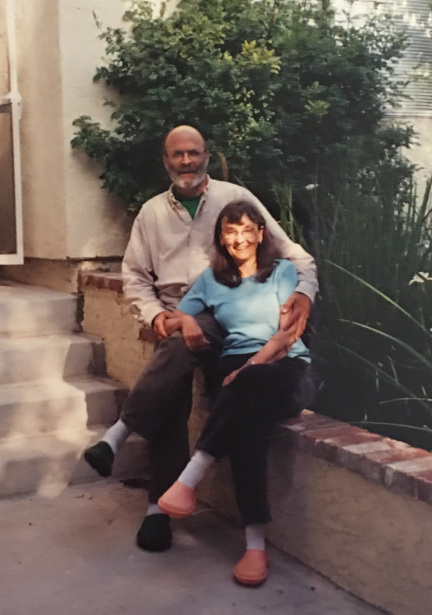
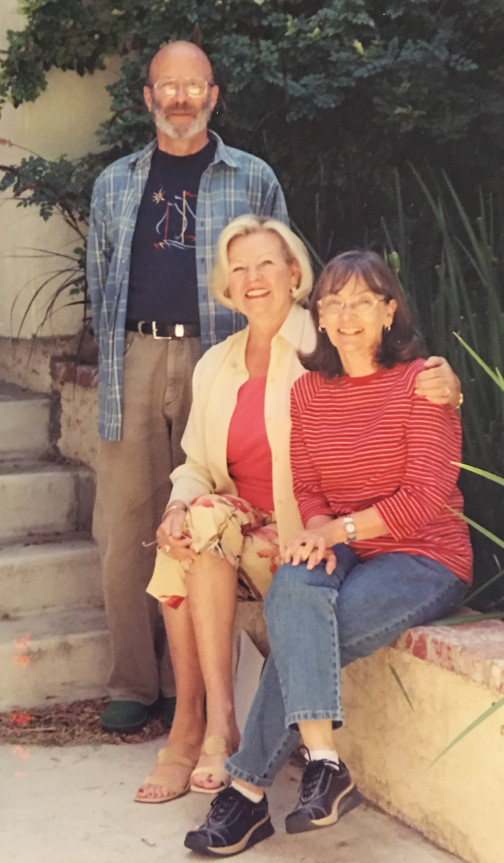
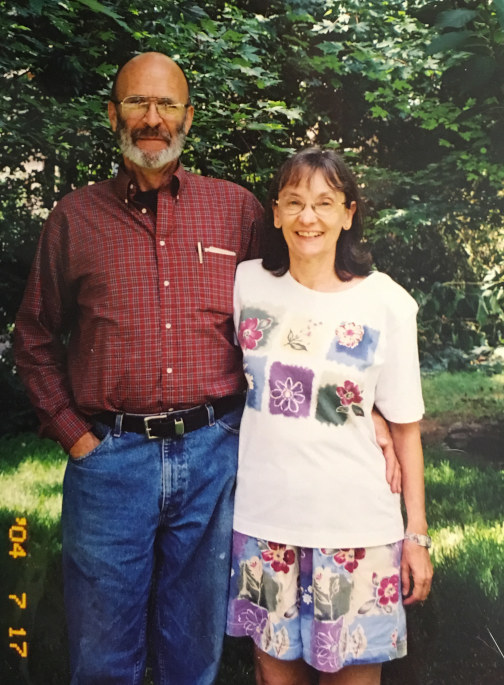
Information about the Camarillo Wing of the CAF here
In 2003, Gene had opportunity to move to Thousand Oaks, CA to work at the headquarters
of his current employer, Amgen. We sold our house in Petersburg, VA and prepared for the
sticker shock of house hunting in southern California. We sold our lovely Colonial Revival
2700 SF house in Petersburg for about 150,000 and started looking in the Thousand Oaks
area, seeing houses for $475,000 that were "tear-down" properties. The definition of
"sticker shock". Fortunately we had a great
realtor helping us, who was willing to consider more unusual properties, and work within our
clearly unrealistic budget. She found us the place that would be our home there.
After a lot of looking, we found a house in Ventu Park, an unincorporated part of Newbury Park, one of the three cities that make up Thousand Oaks, the others being Thousand Oaks and Westlake Village. We were lucky, as Ventu Park was not yet "discovered" and prices were much more reaonable. Ventu Park was, in fact, a bit "suspect" because it was at the edge of Newbury Park, and some of the homes and streets were in the city and some were in un-incorporated parts of Ventura County, so they were technically not in Thousand Oaks. And the people living there were regarded as "non-conformists".
It had started out as a small development, a collection of hunting lodges used by movie people from Hollywood. The lodges were generally rustic and small, perhaps 600 - 800 SF. The home we bought had been made from two such lodges connected together and expanded with the addition of a small separate "casita" in the back yard of one. Because the neighborhood was such a crazy quilt of properties that were within or without the city and not subject to the city building codes, many of the homes had been owner built or modified through the years, subject to few or no building codes or zoning regulation. So the neighborhood was quite interesting and "variable" in architectural style, and in the folks who lived there. Hence the suspicion, I suppose.
Because the area was on land leading up to the mountains from the flat land where most of Thousand Oaks was located, there were steep hills along several "canyons" within the village, with, of course, houses hanging off the edges of the winding roads along the hills, the "hanging" ends supported on long stilts. Our place backed up to one of the canyons and had a view across the city to the mountains on the other side of Thousand Oaks. Our back yard was therefore the preferred spot for neighbors to watch the Fourth of July fireworks over the city each year, a fact we were informed of by a neighbor as we were moving in to the house in late June. So that was how we met most of the folks who lived on our short street (Elm Road) shortly after moving in and began a long series of neighborhood get togethers and friendships.
Ventu Park also backed up against the Hope Nature Preserve, several hundred acres of land donated by Bob Hope, which in turn was adjacent to other nature preserves and parks, and so on, up and over the mountains to Malibu. The several trails through the nature preserves came down to the edges of Ventu Park, so it was easy to connect to those trails when out for a walk. Most of Thousand Oaks was similar and had miles of walking paths connected to adjacent un-developed land, part of the original plan of the city.
Thousand Oaks was an early "planned city", and was developed in a sprawling manner, with each neighborhood generally being very similar in residential architecture and layout. Each seemed to have a "theme". Most commercial development, including municipal buildings and services was sited along the major arterial and in large shopping malls. The neighborhoods branched off the arterial and generally featured a lot of cull-de-sacs in their layout. This design approach made everyone pretty dependent on the automobile for travel to work, shopping, or entertainment. The approach to walkability at the time of its design was to have plenty of walking trails in surrounding undeveloped land connecting to each neighborhood for recreation rather than designing a city where residents could walk to basic shopping and services. Even with all the access to walking trails, one still needed to drive for groceries and other shopping, healthcare, fuel, and entertainment other than hiking.
California route 101 traversed the cities of Thousand Oaks from Los Angeles (about 40 miles away) to Ventura on the coast. "The 101" was a major highway and heavily traveled, think LA freeway traffic, especially between T.O. and L.A. There was little public transportation in the area, so even the "domestic help" largely had to travel by car.
Thousand Oaks was much more homogeneous demographically, economically, and socially, as well as architecturally than little Ventu Park, the latter populated with folks who were a bit "different". Of course, even in the short time (one year) we were there, that changed as Ventu Park was discovered, property prices sky rocketed (20% per year), every scrap of un developed land became a buliding site, and even the little canyon behind our house sprouted several houses that climbed ladder-like, down the sides of the canyon with the garages on the street level and the living spaces down the hill.The "Californication" of Ventu Park marched rapidly on, in the year we lived there and the little, friendly neighborhood we had known became just another part of Thousand Oaks, the second largest but richest city in Ventura County.
A few photos of us at the front of the house, one with our great realtor, Teri.



Some photos of the back yard and the view across the canyon.
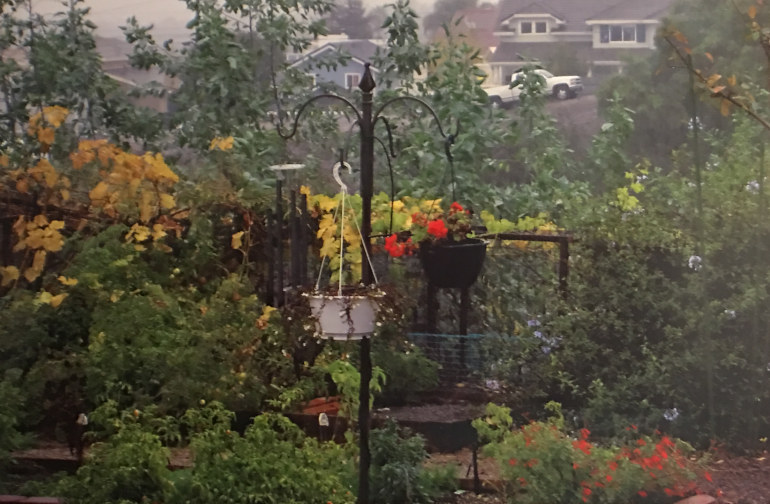
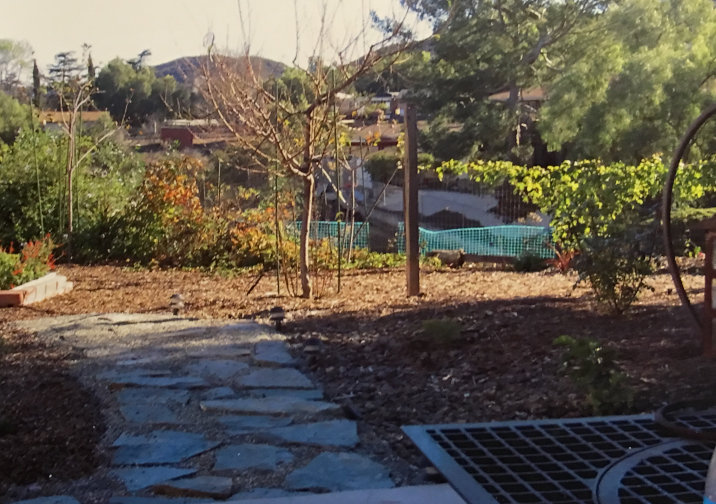
Some photos of the "view" across the city with the mountains behind it. Since this is looking east, the sun came up over those hills. During the Simi Valley wild fires in 2003, the sky over the mountains glowed red at night, and I could see flames behind the hills visible from my office window at work.
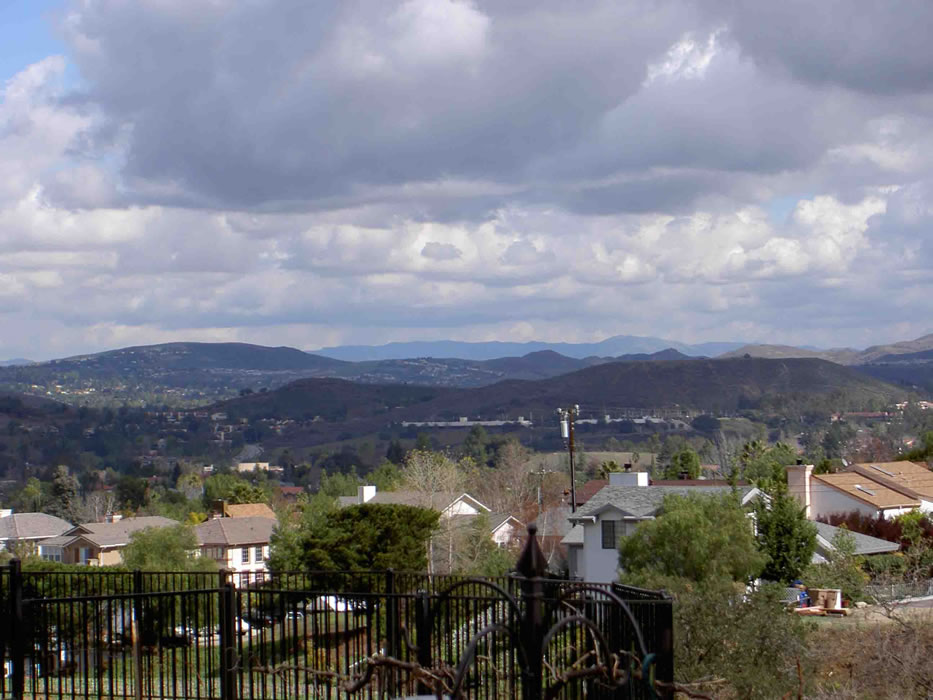

The previous owner was a local "developer" who had bought the place four or five years previously and re-did it in California style. It had been rented for several years to a couple who did extensive plantings in the back and front yards. They had done massive amounts of work on the assumption that they would be buying the place when it came up for sale, but it appeared that the owner marketed it without telling them, or perhaps priced it beyond their means, and they were understandibly upset about having to move out of their home under the circumstances. They were, however, gracious about it and left us with a wall of spectacular rose bushes that provided us fresh bouquets daily almost year round, a bearing peach tree, a lemon tree, and an artichoke plant. During peak times, we nearly filled the city composting container with spent bloom from the roses each week, and we had lemons and artichokes more than we could give away. A reminder of what Zucchini season was like in New Hampshire, but nicer. It is still painful to pay for lemons when grocery shopping.
Oxnard was close to Thousand Oaks and Oxnard was still a productive agricultural area, growing the finest strawberries in the country, although even in the short time we were there, the strawberry fields were being sold off and turned into residential housing. But the growers would let the pickers buy from them fruit too ripe to ship and the pickers would then sell the berries by the roadside near our home. Best berries ever, and cherries and avocados in season.
Below is another view of the back yard from the little "casita" behind the main house. This was a guest house, with small kitchen and bath and a separate entrance. I turned it into a library and ship model workshop.
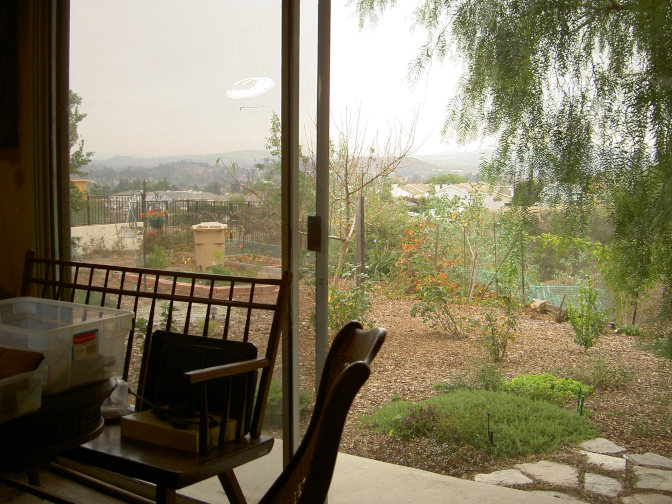

While we lived there, Ellen worked at the library of California Lutheran University, a great job in a great institution, and an easy commute, as it was in Thousand Oaks, a few miles from our home. She also contined her work in the fiber arts, knitting, needlework, and weaving.
Gene kept up his ship model building and fell in with a group of ship modelers based at the Ventura County Maritime Museum, a small, but growing, museum in Oxnard, CA. The museum is now the Channel Islands Maritime Museum and is in a new home. It has a remarkable collection of marine paintings and ship models.
Gene also worked as a docent at the Camarillo wing of the Commerative Air Force, located in Camarillo.
The Camarillo wing was a pretty active one, with something in the air nearly every weekend. They had one of the last Zeros flying, a naval version with folding wingtips, a C-46 Commando, "China Doll", a Bearcat, and several AT-6 trainers which were often in the air. There were several planes under restoration, including a B-25, and some others on static display temporarily awaitng major engine work, such as a P-38 "Lightning", and a British Spitfire, Mark 5.
This is the Zero. One of the few remaining and one of two still flying, worldwide.
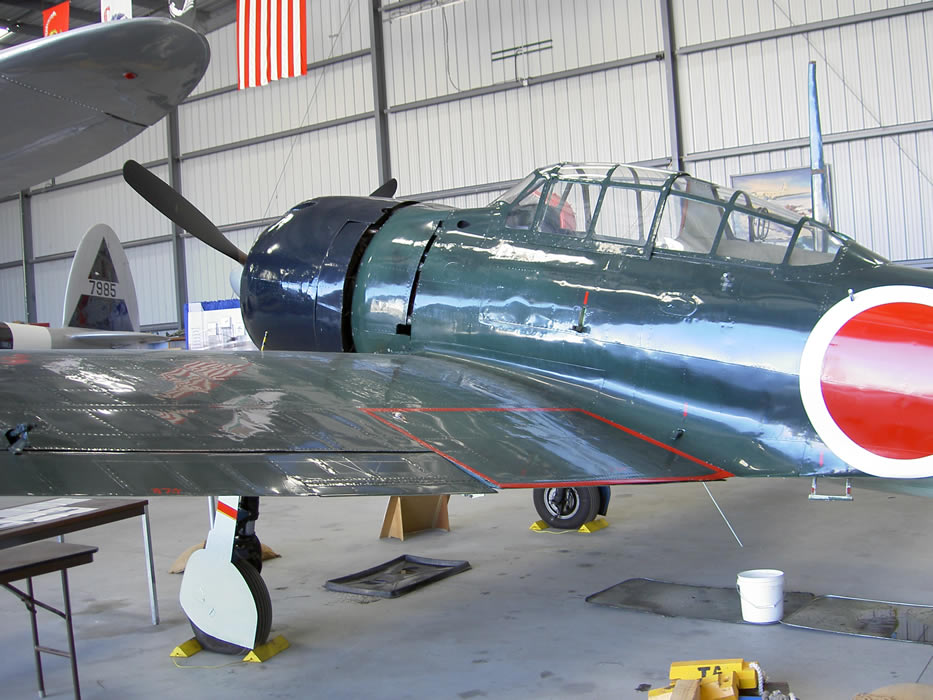

The folding wing tip on the Zero marks the naval version. It was just a small bit of the wing that folded, unlike US naval versions of carrier aircraft. Below is a photo of the Zero engine, stored on a stand. Markedly similar to American engines, it had been swapped for a US made equivalent size engine because of the availability of spare parts. Engine reliability is a recurring issue for these warbirds. This particular Zero, one of two still flying, is the only naval version. It has appeared in several movies.

This is "China Doll", a C-46 "Commando". The C-46 was similar to the Douglas DC-3, designated by the military as C-47, but had some very significant differences. First, it was built by the Curtis-Wright aircraft company and although designed in the late 1930's and first flying by 1939, it was intended for the commercial passenger aircraft market rather than for cargo duty and was one of the first aircraft designed to have a pressurized passenger compartment. The fuselage was designed with a "figure 8" configuration, having an indentation or crease along the sides of the fuselage where the floor of the passenger (upper) compartment was physically joined to the framework of the sides of the fuselage, separating it from the lower cargo compartment and facilitating the pressurization of the passenger area. The development of more powerful engines allowed the plane to be a twin engined craft rather than having the four engines of the original design.
The military used the C-46 primarily as a cargo carrier, as the C-47, and the two are often confused. Some of the military C-46s were modified with larger cargo doors, and China Doll is one of these versiond. C-46s are perhaps best know for flying the China-Burma route over the Himalayas ("The Hump") to supply bases in China from locations in India during WW2. Hence the name of this one. There were only about 3,000 C-46 built and about half a dozen are still flying, some in commercial cargo service. In contrast, there were around 16,000 C-47 (DC-3) built and around 2,000 are still flying.
China Doll was very active and flew nearly every weekend. The flight path on most returns took her right over our house, and on many flights she was accompanied by the Bearcat. She was also used to transport cargo, such as dis-assembled aircraft, especially the wings, when a plane was purchased and needed reconstruction. China Doll was grounded in 2019 to undergo restoration due to major corrosion issues and I do not know her current status.

There were a couple of SNJ-5 "Texan" trainers, which were, I recall, privately owned and housed with the planes of the CAF. There were pretty active and flew frequently.
The F8F-2 Bearcat was another very active flier and often accompanied China Doll to air shows on weekends. Here are a couple of pictures of the Bearcat in the hanger undergoing engine maintenance. The Bearcat was successor to the Wildcat and Hellcat and was a carrier aircraft with much improved performance. The improvements in performance were due largely to the smaller airframe and lighter armanament, as the engine originally used in the original version (1944) was not different from other aircraft of the time. The smaller size also permitted a carrier to hold more of the Bearcat than its predecessors, even though on the Bearcat only the outer six feet of the wing folded, rather than the entire wing at the root, as on the earlier aircraft.
The Bearcat. Undergoing some engine repair/maintenance. Is there a pattern here?
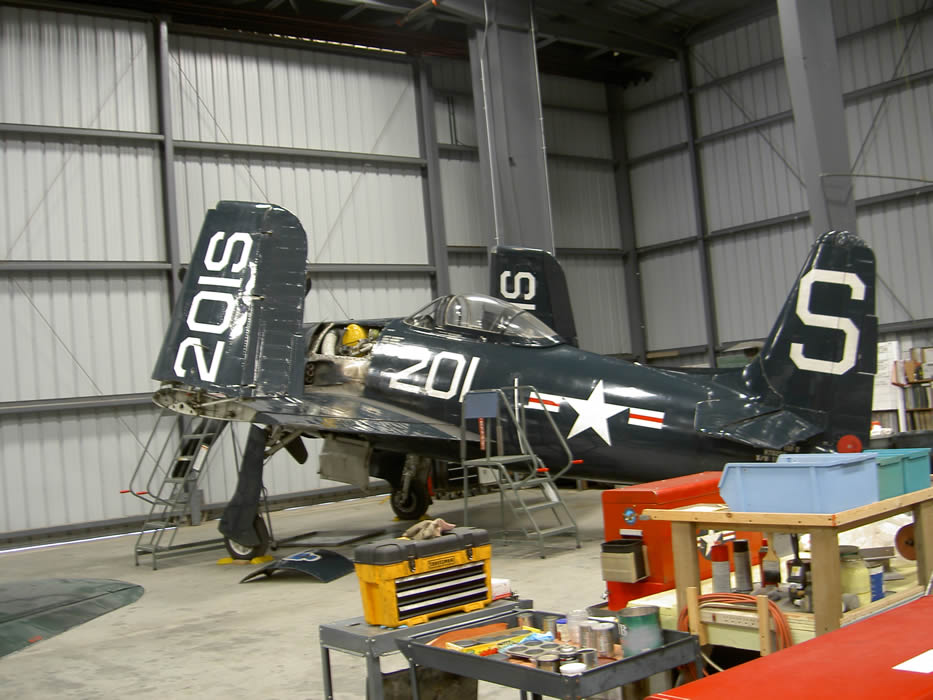
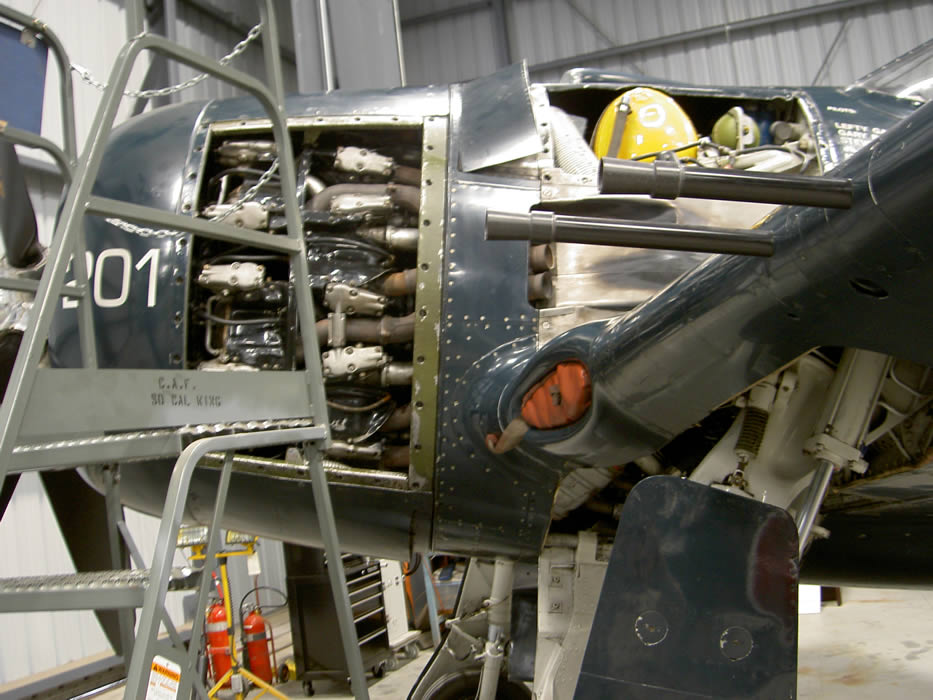
There was a P-38 on static display at the hanger. It was not flying because the engines were considered "unreliable". The Turbo-superchargers had been removed and I am not sure what the engines in the plane were at that time. After we left California, the aircraft was restored to flying status and transferred to another CAF wing, or sold, before it was sold to the Collings Foundation in 2015. It is still flying with the Collings as far as I know.
Here are some photos of the P-38. This aircraft was a P-38-L version, manufactured in Nashville, TN, in 1944, with serial number 44-53186 and carries civil registration number N5596V. There is one picture with me in the cockpit, playing Snoopy playing the Red Baron, according to one friend.
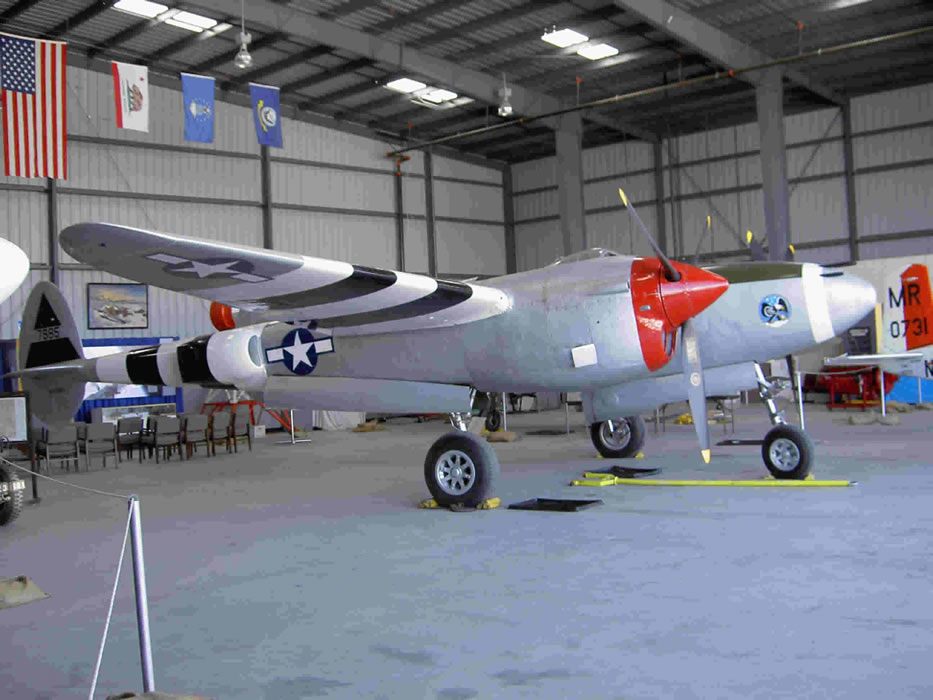

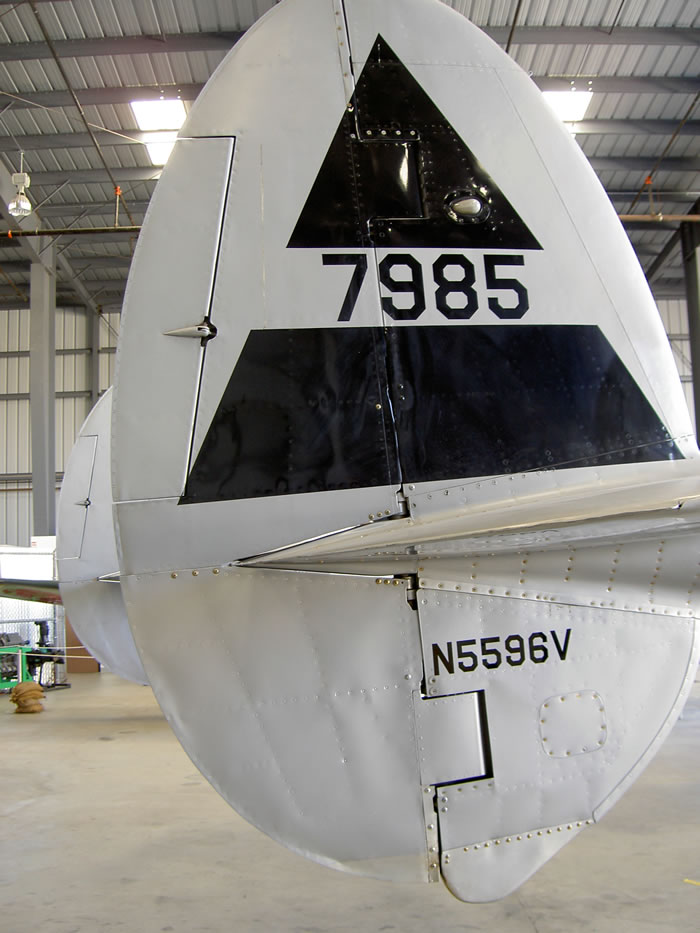

Another plane on static display, due to engine problems, was a Spitfire Mark XIV. This was a late model Spitfire with a different engine, the Rolls Royce Gryphon, which entered service in 1944. This craft was restored to flying status and is now active, and still with the Camarillo CAF.
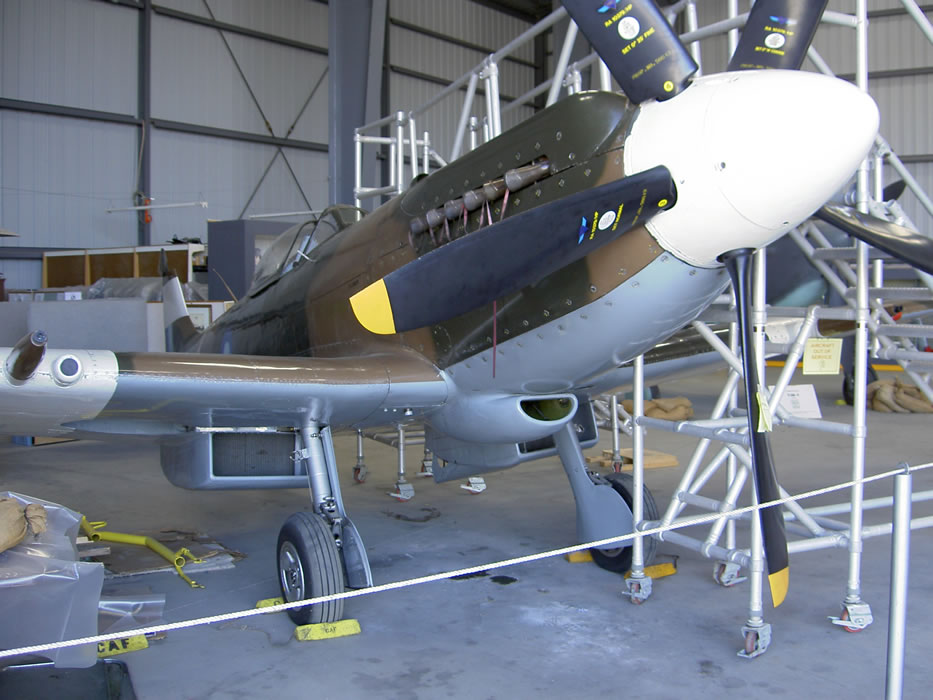
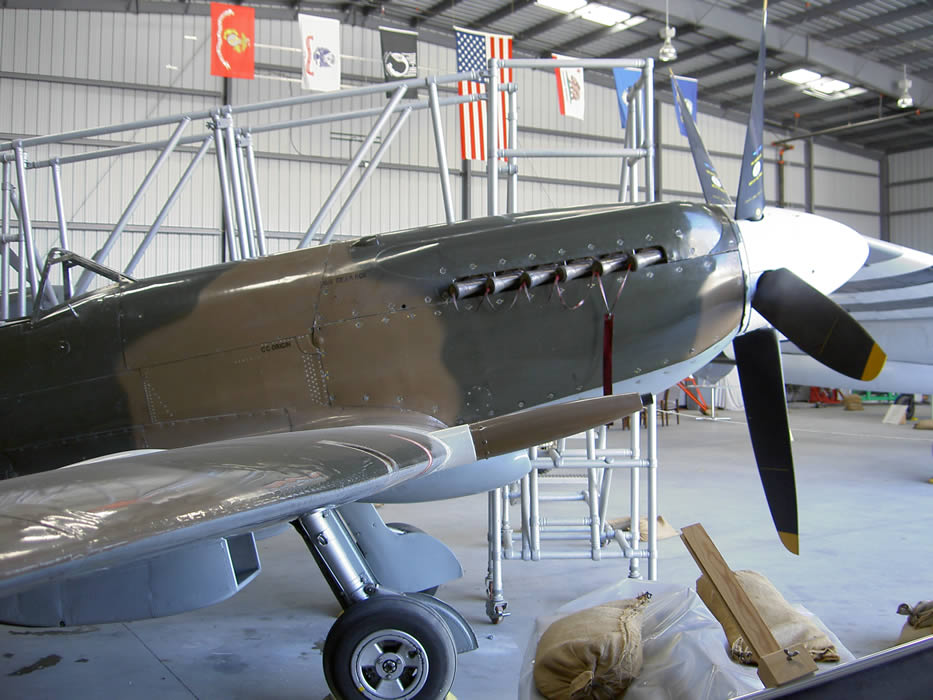
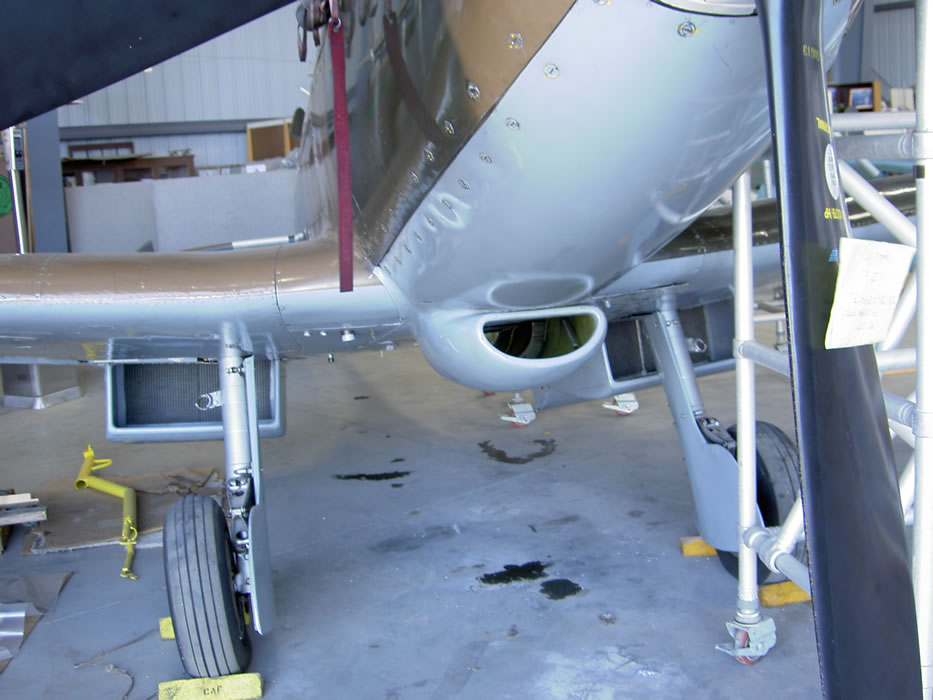
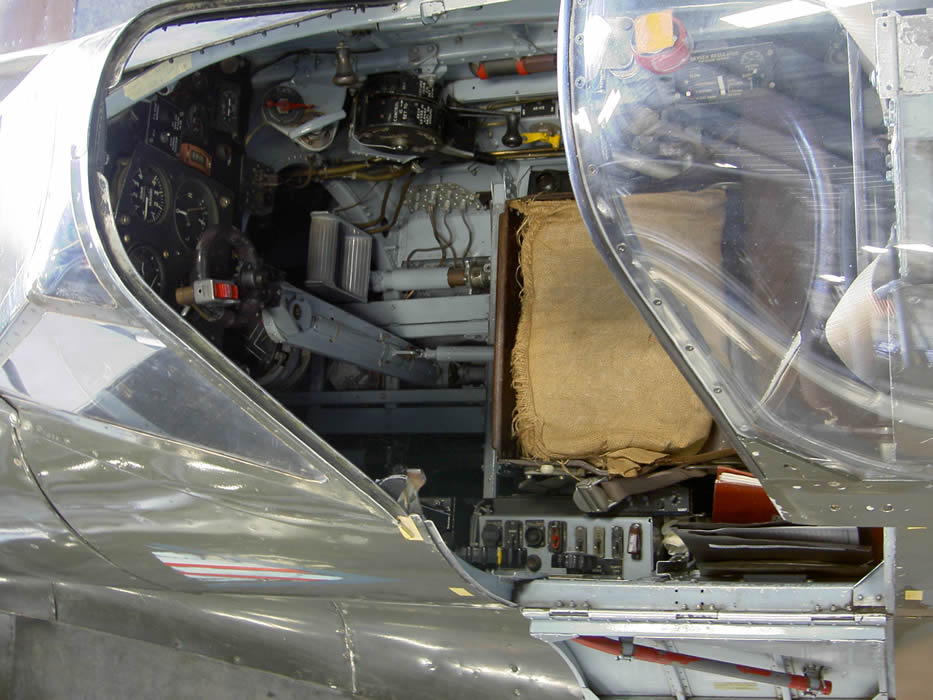
In the working hanger, there was a B-25 being restored. Rebuilt, actually. There were several members of the group there with experience in building air caft and they were teaching and supervising volunteers in the reconstruction of this aircraft. This particular one was a PBJ-1J, the naval/Marine Corps version of the B-25, and had flown to the Camarillo CAF from Midland, Texas, in 1993, so the work shown here had been going on for nearly ten years when these photographs were taken.
This plane returned to flying status in 2016, just short of 23 years after the restoration began. And the engines rebuilt, of course. In case you were wondering what it takes to restore a warbird to flying status.

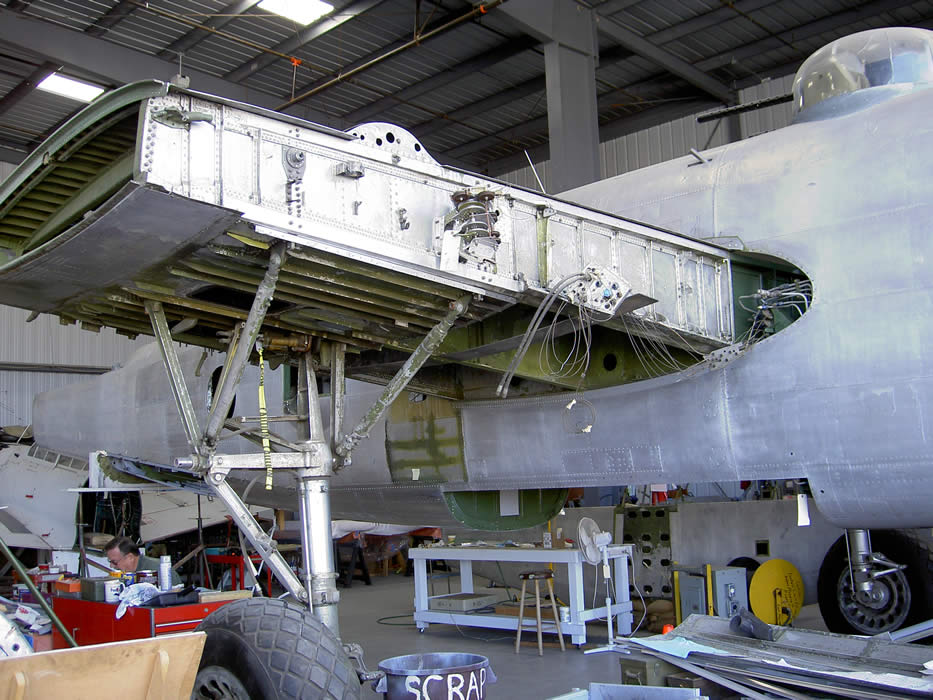

In 2004, the Collings Foundation "Wings of Freedom" tour visited the Camirillo Airport. Here are some photos of the B-17 and B-24 that visited.
The B-17 was the "Nine o Nine", the plane which crashed and was destroyed on October in Connecticut, carrying a crew of three and ten passengers. Seven of the thirteen people aboard were killed in the crash. The NTSB investigation revealed problems with the magnetos of one engine, including one that had been "jury rigged" and not operational and the other not operating properly producing a weak spark. Inspection of other engines revealed other maintenance issues including improperly gapped spark plugs. The findings of the NTSB are still incomplete (2020) and multiple lawsuits are in process.
The B-17, "Nine-O-Nine"

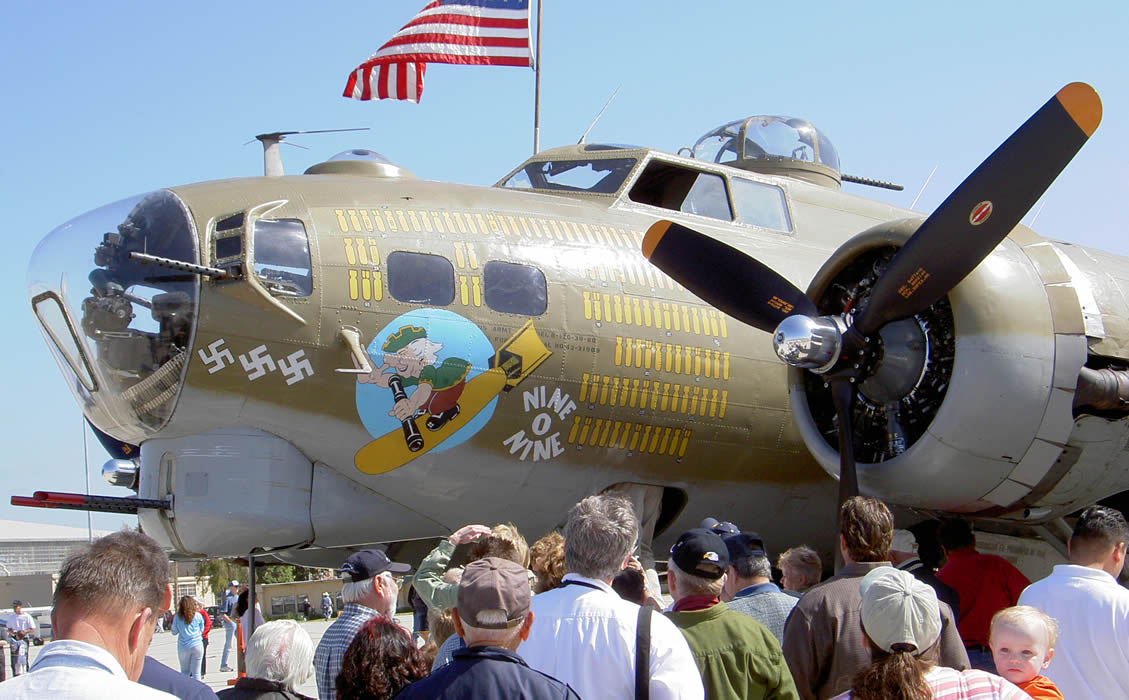
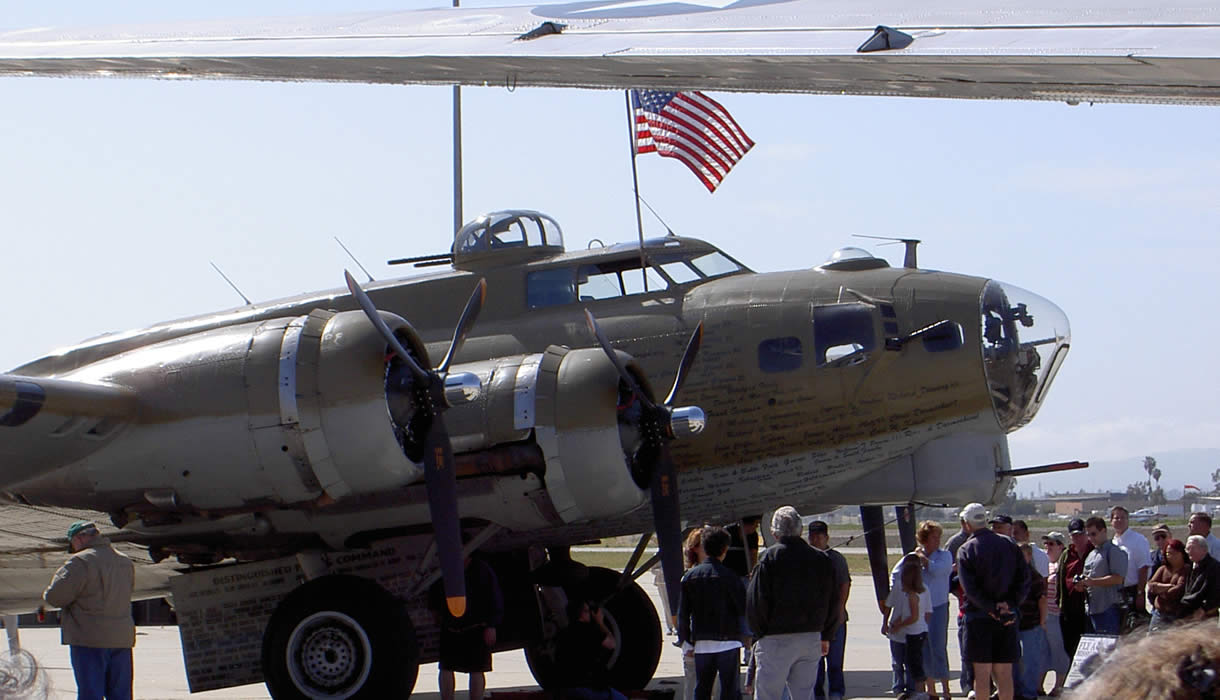
The B-24, "The Dragon and His Tail", the only flying B-24 at the time. As you can see by the nose art, it is easy to understand why it was renamed not long there after, since the "Wings of Freedom" tours are "family friendly". It is presently known as "Witchcraft" and is likely still airworthy at present (2020) but the Collings Foundation has discontinued the "Wings of Freedom" tours indefinitely and is no longer certified to carry passengers on its aircraft subsequent to the finding of the NTSB regarding the crash of the "Nine-O-Nine".
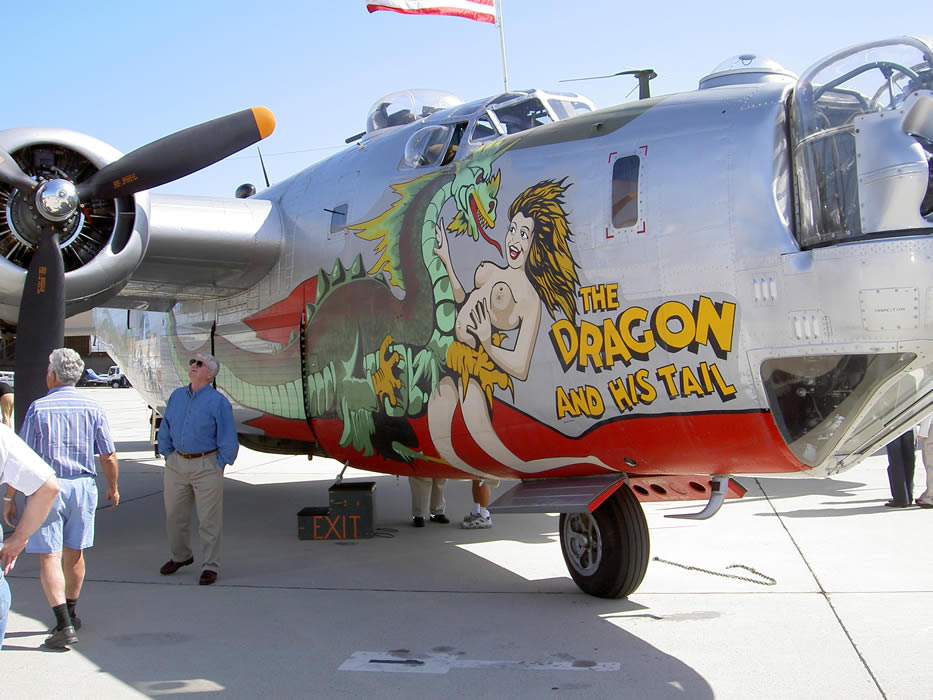
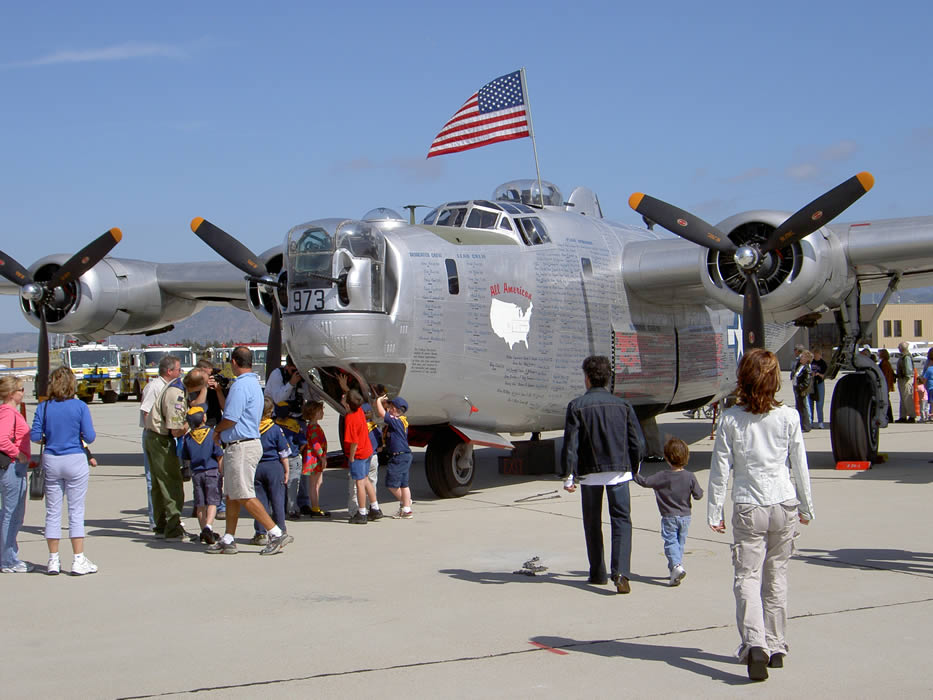
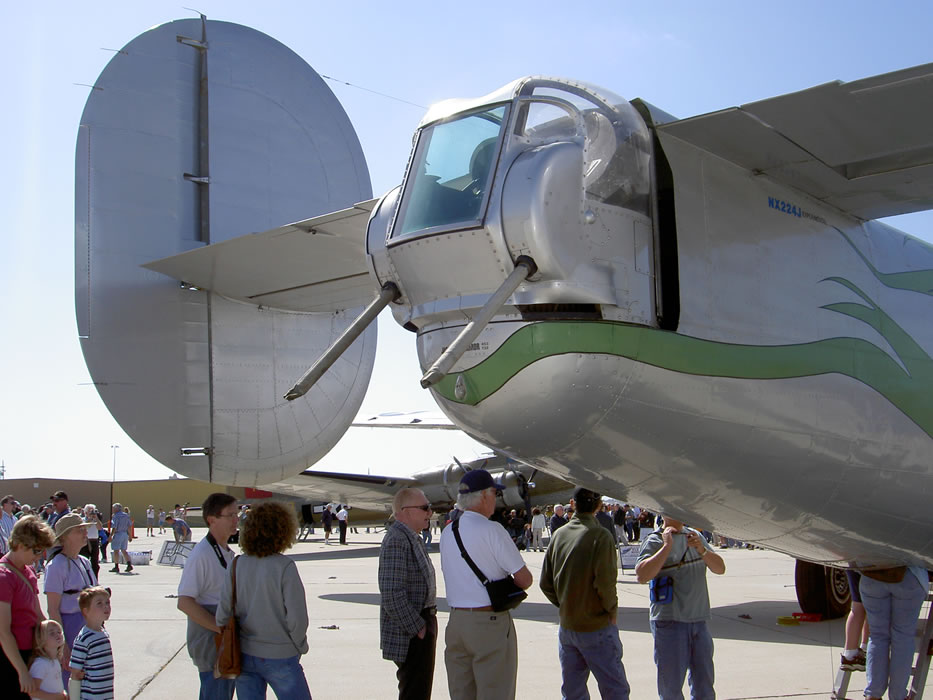
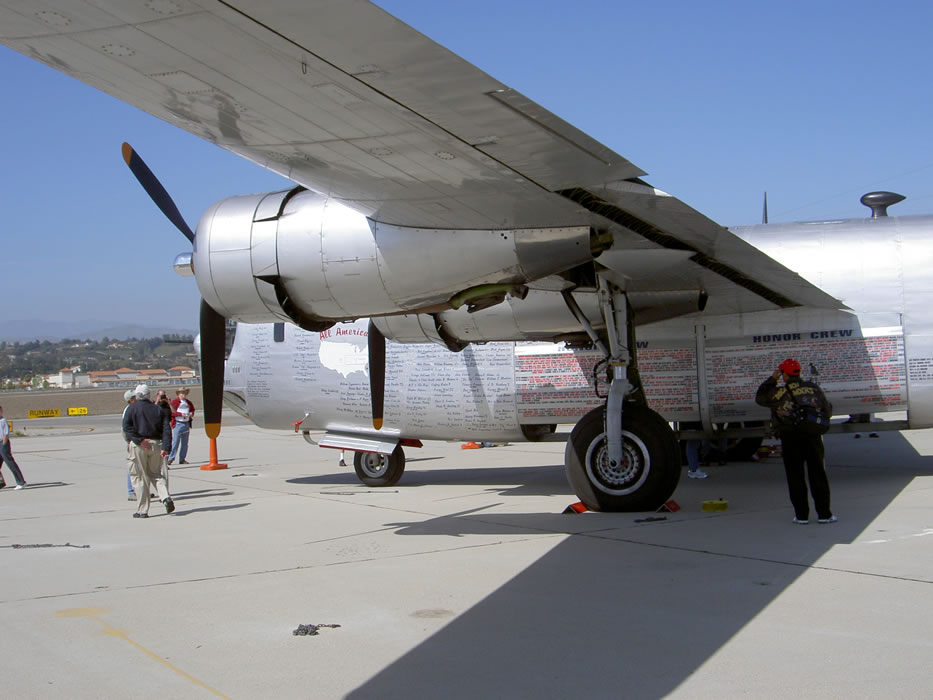
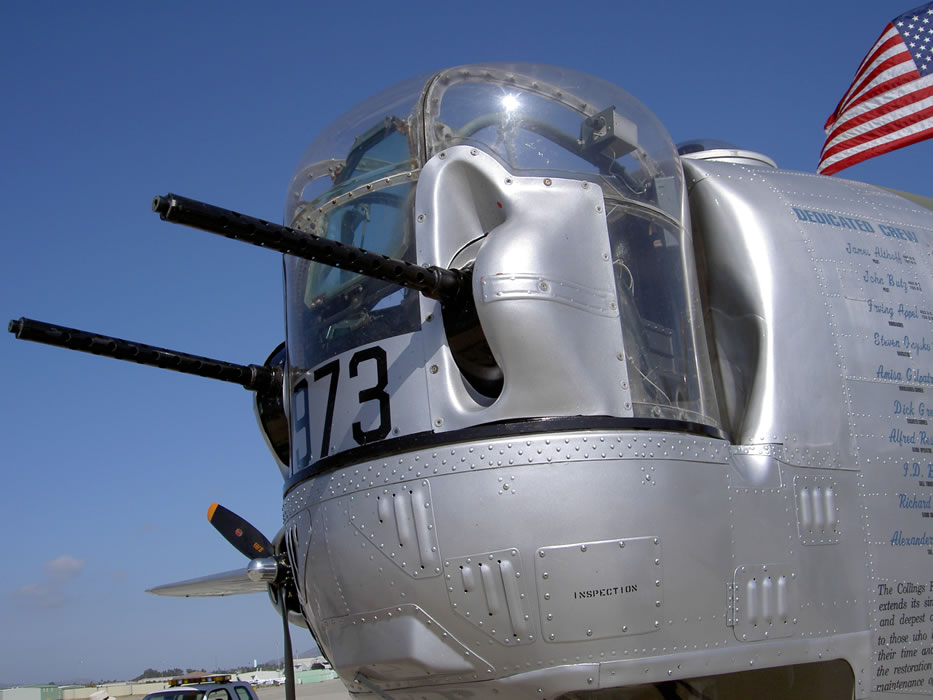
If interested in old warbirds, there are some photos of a DeHavilland Vampire here.
The airport also had two Super Constellations parked at the end of the runway. Both were flying, but rarely. One was a military version used to train radar operators and was pretty much original. The other was a civilian version, which had been converted to private use. This second one was sold to a Swiss consortium in 2004 and flown to Europe where it was to be reconditioned and used for private excursions by a group of European Constellation enthusiasts.
Several days before it was flown to Europe, a couple of pilots came over to the CAF hanger for a tour of the aircraft there. One of the planes at the CAF site was a Convair 131-D, "Samaritan", a civilian plane converted to military transport use. This one had been set up to fly VIPs around, so it was more like the civilian version, the Convair 240. The pilots, who were in town preparing to fly the Constellation out after a shakedown flight came over in part to see that plane, which was visible on the tarmac from where the Constellations were parked. One of them had flown the civilian version years before in commercial airline service. I was the docent that day and guided them around. I learned more about that craft than I had known before and also got invited to fly with them on the Constellation the next day when they were taking it up for a familiarization flight. Foolishly I declined the invitation as I had to work that day. The flight went well, and the day after that, the Constellation left on a tour of the US, picking up Constellation fans at various airports along the way for the ultimate trans-Atlantic flight the following week. Another missed opportunity.
The neighborhood was great, and we soon were friends with most of the neighbors and felt very much at home on Elm Road. But after a short time, Gene's job was eliminated and, although he had a job offer from the employer, we decided to move to a place closer to family and less expensive. Although the liviing was good in Southern California, it was costly, and we realized that we would never be able to retire there. It seemed more sensible to relocate now to a place where we could spend the rest of our days rather than putting down roots that would need to be severed or transplanted when the time came to cut back on work. After a search, we decided on Fayetteville, Arkansas, and moved there in 2004.
Selling our California home was a new and different experience, as a bidding war happened and we sold it for more than the asking price. A new experience after waiting over four years for the New Hampshire farm to sell. So we said our farewells and headed east on Interstate 40 to Arkansas, joining a substantial number of Californians during that time who were retracing the routes their parents had taken when migrating west during the dustbowl and depression era.